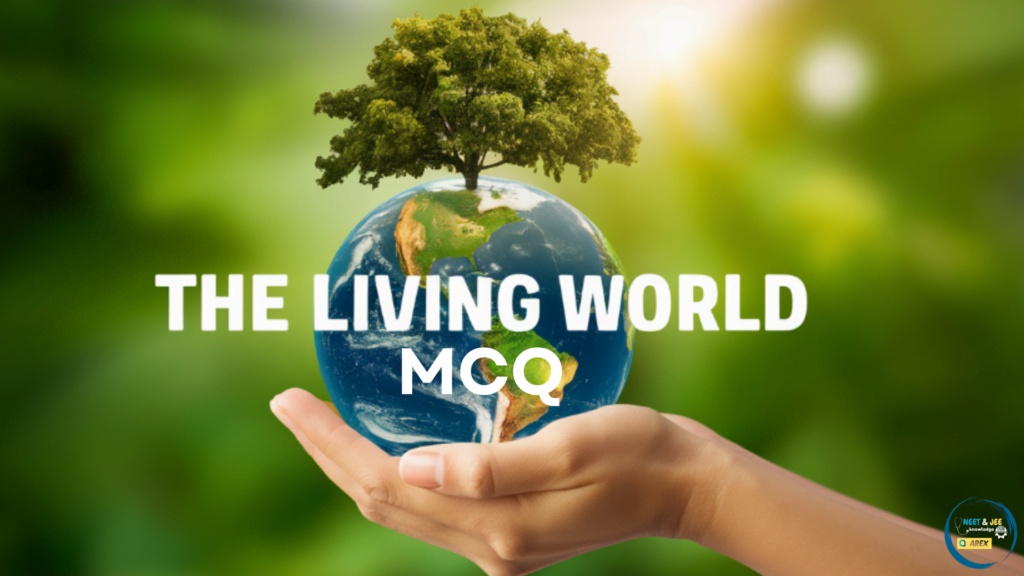
The Living World NEET Biology Questions with Answers
The living world encompasses all living organisms, from the tiniest bacteria to the largest mammals. It includes a vast diversity of life forms found in different habitats such as forests, oceans, deserts and even the polar regions. These organisms are classified into various groups based on their similarities and differences. Classification helps in organizing the immense variety of life and understanding the evolutionary relationships between different species. For NEET students, understanding the living world is fundamental as it forms the basis for studying more complex biological concepts.
Organisms exhibit a wide range of characteristics such as growth, reproduction, responsiveness to stimuli, metabolism and homeostasis. These features distinguish living beings from non-living matter. The study of the living world also involves understanding ecosystems, biodiversity and the interdependence of organisms. NEET students must grasp these concepts to appreciate the complexity and beauty of life on Earth. Knowledge of the living world is important for further studies in biology, medicine and environmental science.
| NEET 2025 Exam Important Links | |
|---|---|
| NEET 2025 Updated Syllabus | NEET Eligibility Criteria 2025 |
| Biology Preparation | Chemistry NEET Preparation |
| NEET Preparation tips for 2025 | NEET Result 2024 |
The Living World NEET MCQs
However, in living organisms, growth is from inside (i.e. cell division in the body).
Enhance your preparation with Arexiq’s Mock Test Series where we provide solutions to various MCQs like we provide in this post “The Living World NEET MCQs”. Our expert teachers explain the concepts thoroughly, making it easy for you to understand. We offer many types of questions ensuring a clear grasp of concepts.
FAQs about The Living World
- What is the significance of classification in the living world?
Answer. Classification helps organize the diversity of life, making it easier to study and understand evolutionary relationships among different species.
2. What are the basic characteristics of living organisms?
Answer. Basic characteristics include growth, reproduction, responsiveness to stimuli, metabolism and homeostasis.
3. Why is biodiversity important in the living world?
Answer. Biodiversity ensures the stability and resilience of ecosystems, provides a source of food and medicine, and maintains ecological balance.
4. How do organisms interact within an ecosystem?
Answer. Organisms interact through various relationships such as predation, competition, symbiosis, and mutualism, which help maintain ecological balance.
5. What is the role of metabolism in living organisms?
Answer. Metabolism involves all the chemical reactions that occur within an organism to maintain life, including processes like respiration, digestion and excretion.


